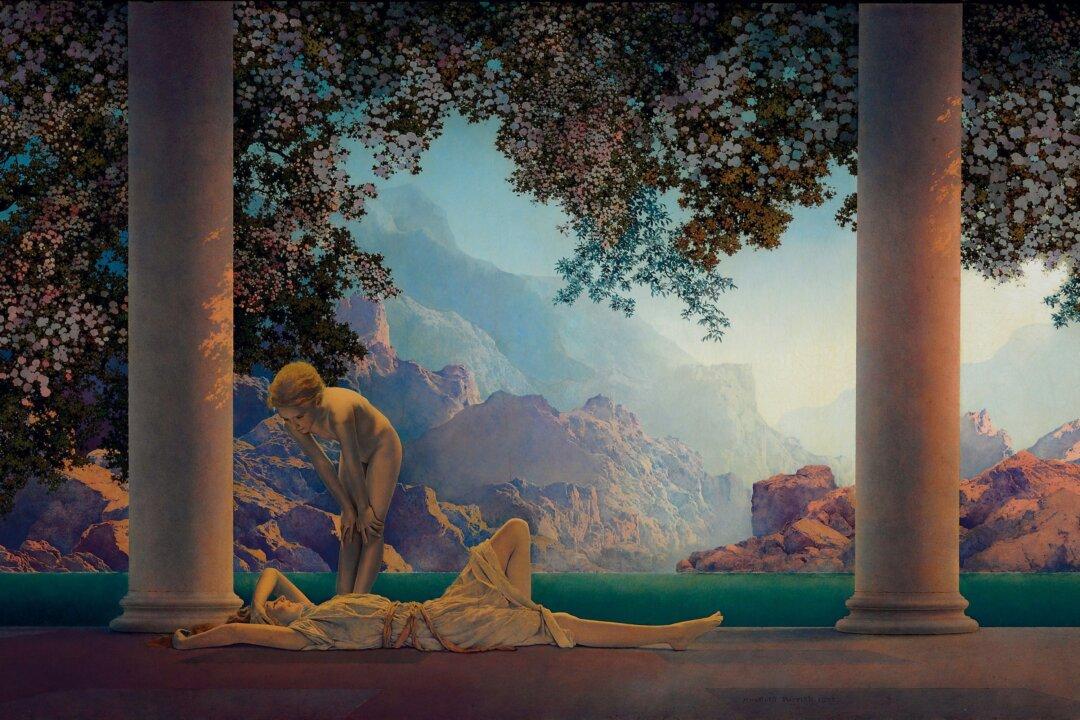“There seem to be magic days once in a while, with some rare quality of light that hold a body spellbound.”—Maxfield Parrish
The art of Maxfield Parrish was enjoyed by millions in his lifetime, thanks to 20th-century innovations in color printing and mass distribution. Parrish became a household name as he gained widespread success for his iconic neoclassical prints, children’s book illustrations, advertisements, and covers of popular periodicals, including Life and Harper’s Bazaar.





